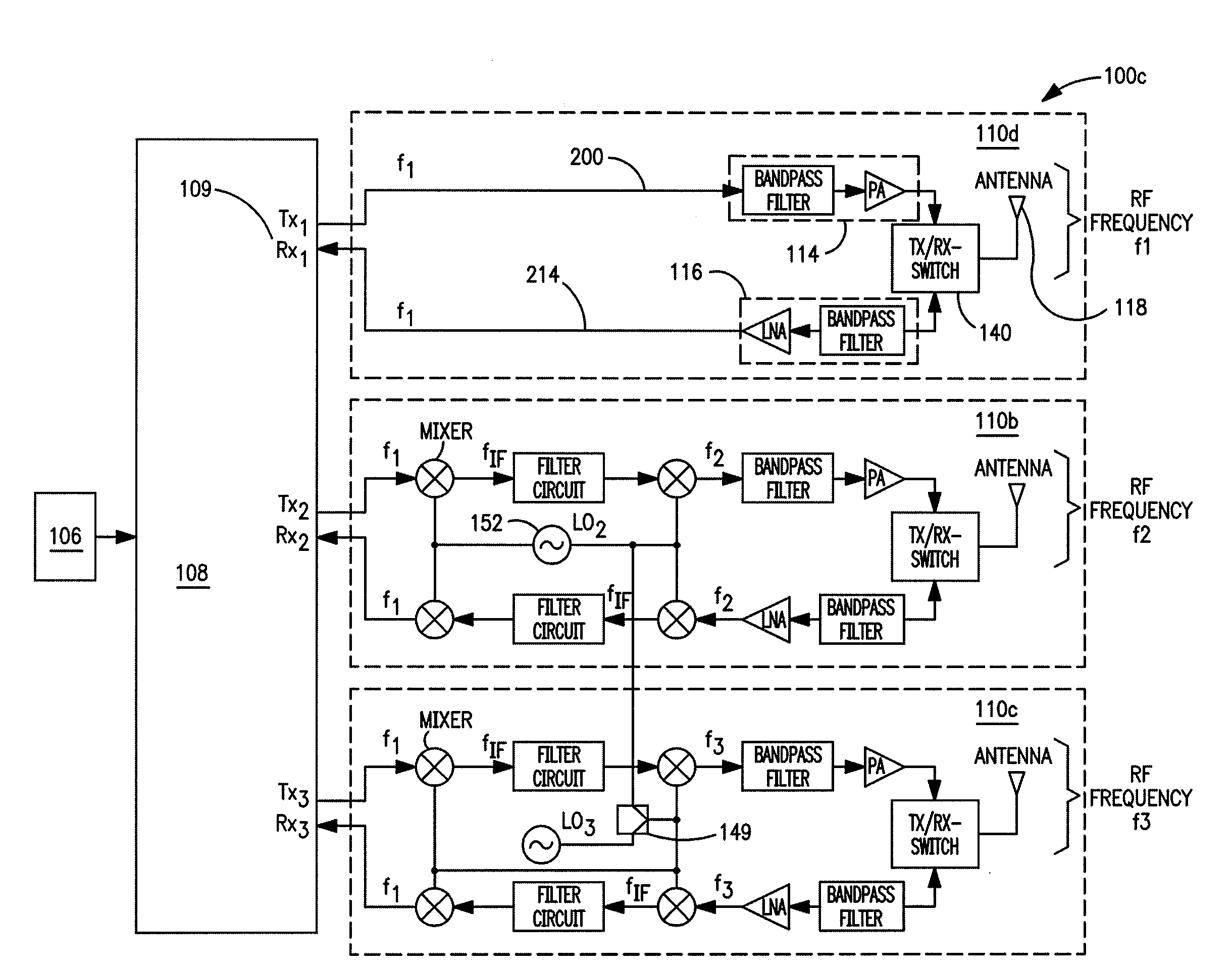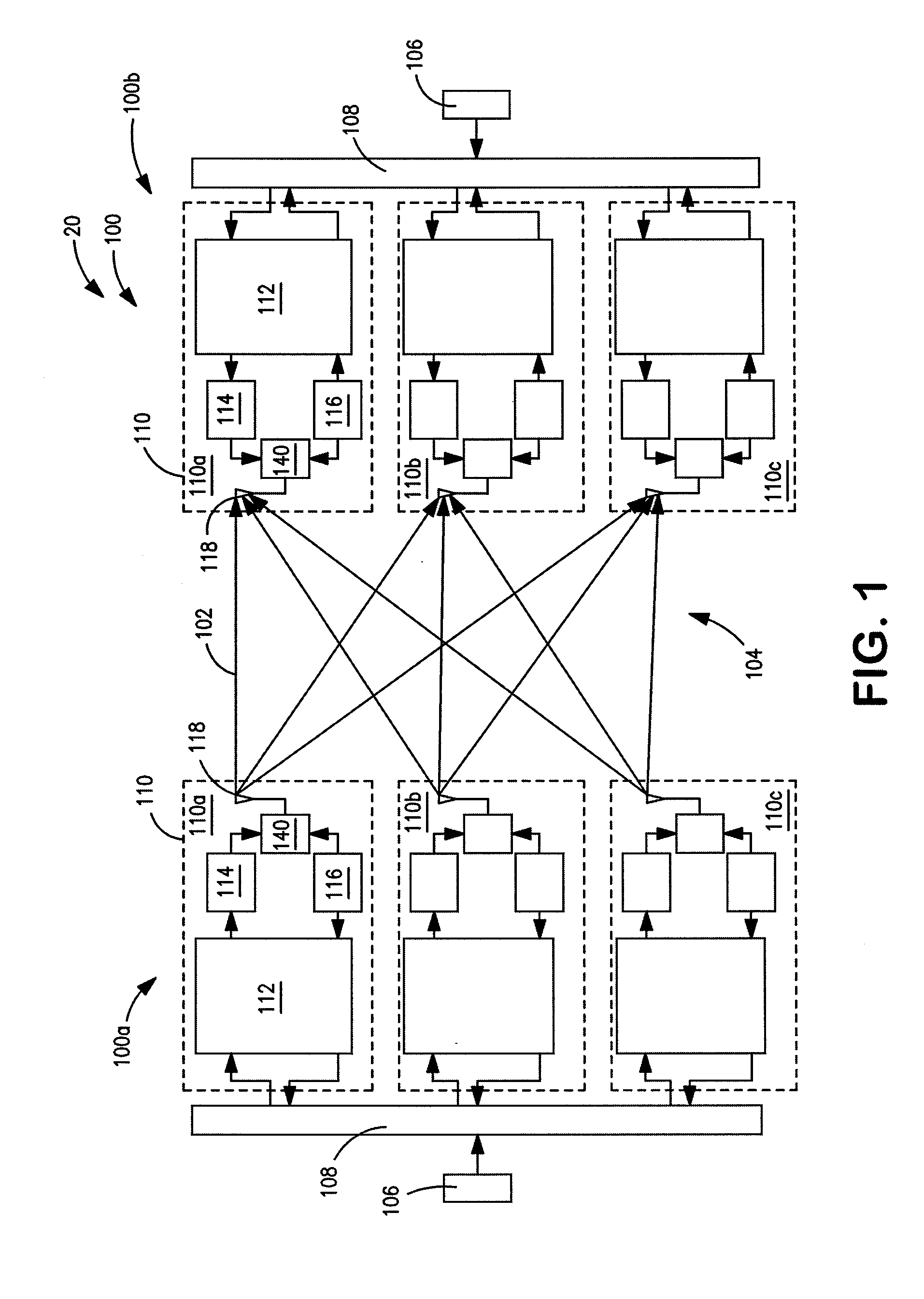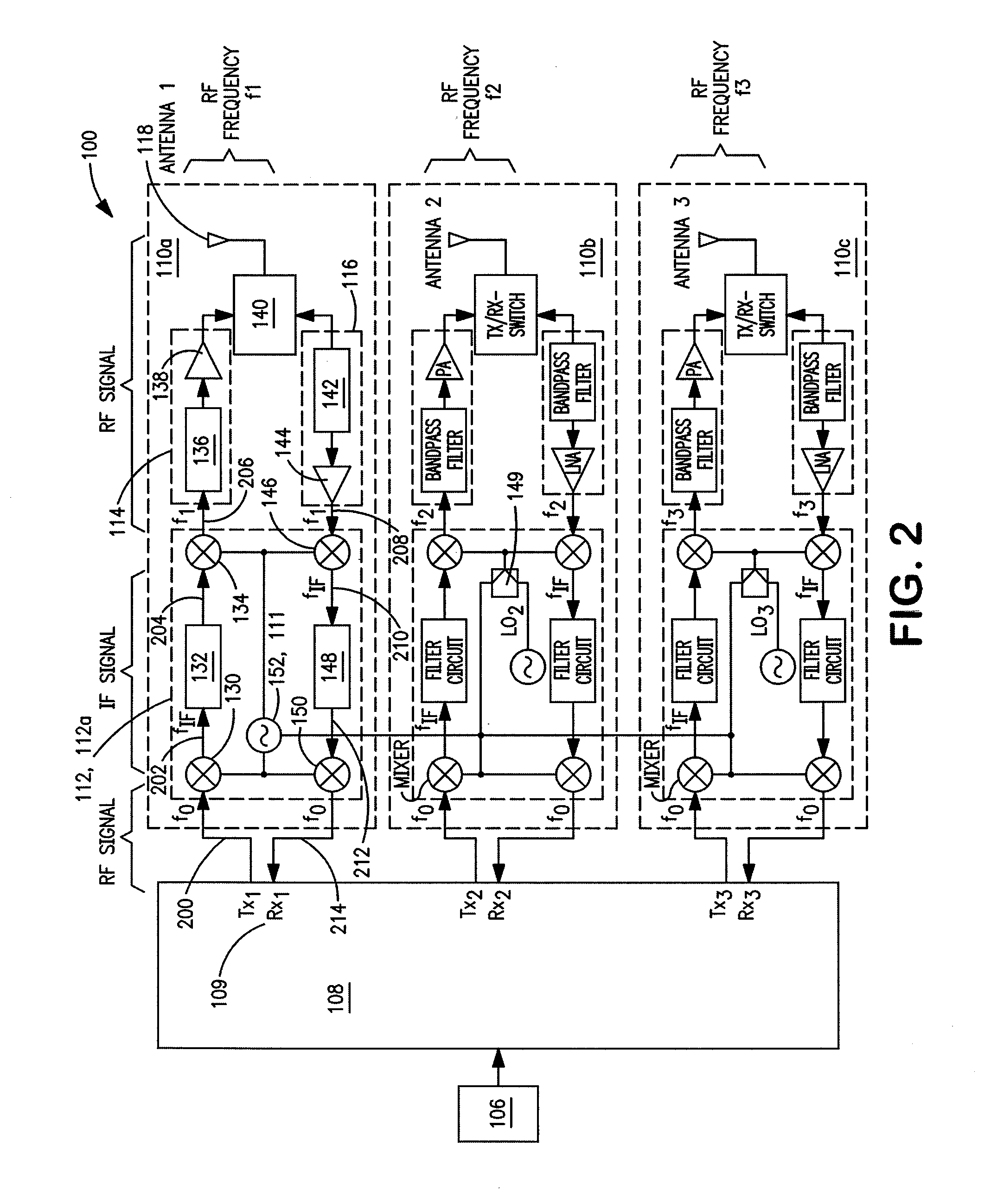System and method for frequency offsetting of information communicated in mimo-based wireless networks
a wireless network and information communication technology, applied in the field of communication systems, can solve the problems of reducing link budgets and therefore cell sizes, overriding industry requirements of solution size, power and cost, and limiting bandwidth. the effect of bandwidth expansion
- Summary
- Abstract
- Description
- Claims
- Application Information
AI Technical Summary
Benefits of technology
Problems solved by technology
Method used
Image
Examples
Embodiment Construction
[0064]At the digital signal processing (DSP) level, conventional multiple-input / multiple-output (MIMO) systems employ the ability to adjust for small difference in phase and frequency variations caused by a multipath environment. More specifically, MIMO systems are typically able to account for the dynamic nature of the multipath environment, in which reflective elements are moving relative to one another. Generally, such motions have velocities in the range of a walking pace, i.e., up to 2 meters per second. Vehicular motion may include velocities in a range of up to approximately 150 meters per second. Accordingly, MIMO algorithms which account for frequency shifts caused by vehicular motion must allow for frequency shifts of up to 3000 Hz, assuming that f=approximately 6 GHz (given that v=f*λ, so for v=c=3×108 m / s, λ=0.05 m, and then for Δv=150 m / s, Δf=150 / 0.05=3000 Hz).
[0065]Accordingly, although conventional MIMO systems can perform a modest level of phase and frequency adjustm...
PUM
 Login to View More
Login to View More Abstract
Description
Claims
Application Information
 Login to View More
Login to View More - R&D
- Intellectual Property
- Life Sciences
- Materials
- Tech Scout
- Unparalleled Data Quality
- Higher Quality Content
- 60% Fewer Hallucinations
Browse by: Latest US Patents, China's latest patents, Technical Efficacy Thesaurus, Application Domain, Technology Topic, Popular Technical Reports.
© 2025 PatSnap. All rights reserved.Legal|Privacy policy|Modern Slavery Act Transparency Statement|Sitemap|About US| Contact US: help@patsnap.com



